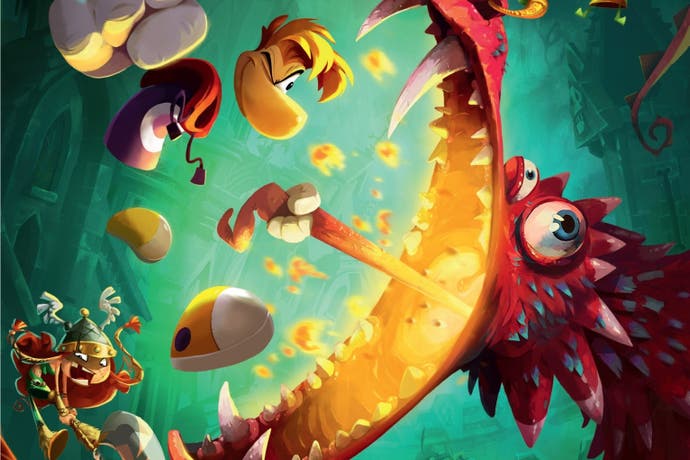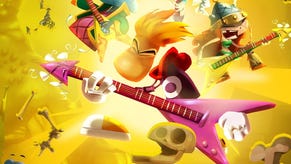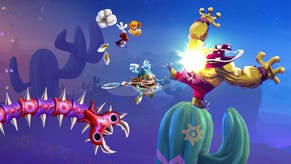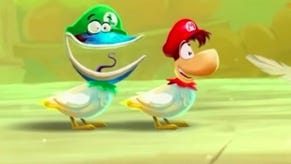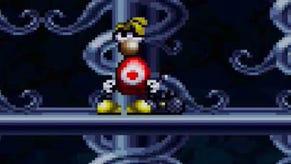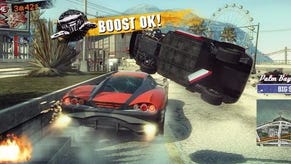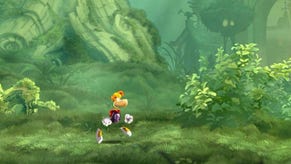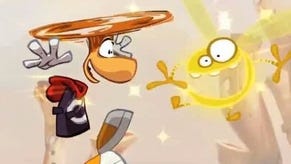Rayman Legends review
Ray of light.
Rayman Legends is released this week on PlayStation 4 and Xbox One. For full details of those versions check out Digital Foundry's next-gen face-off. In addition, here's Dan's review of the game on Xbox 360, first published on 26th August 2013. We're confident it holds true for both new versions.
It's delightful, of course. That won't come as much of a surprise to anyone who played Rayman Origins, one of 2011's best games and an unlikely return to form for a character most had written off. With such a solid foundation, Michel Ancel and his team at Ubisoft's Montpellier studio haven't reinvented the wheel. What they've done is take an already wonderful wheel and polished it into something remarkable.
Like the previous game, this is a 2D platformer in unashamedly classic style, delivering a constant stream of small gameplay nuggets. Every jump is a test, every obstacle a trial. Some must be tackled at speed, others allow you to think your way around them. All have been designed so that it's never as simple as a one-two-three hop up staircase-shaped platforms. You'll float, swim, glide and sprint past spikes and flames, and you'll fail. A lot. You'll feel that familiar frustration - the same feeling you got from Mega Man and every other side-scroller of note - but you'll know that it's not the game that's at fault. It's your timing, your sluggish reaction, or your panic that let you down.
This is the core of the game, and it represents the platform genre at its best. Not only does each new level bring fresh delights, but each new inch of screen that scrolls towards you will inspire grins and grimaces in equal measure. The Rayman series has endured more through Ubisoft's corporate determination than anything else, but with Legends this perennial runner-up earns its place alongside the likes of Super Mario Bros. It's that good.

Yet Rayman Legends doesn't excel by copying Miyamoto's masterwork. Rayman has his own pace and gait, his levels precision-engineered around his lolloping rhythms and helicopter glide. It's this that truly impresses. Not only does every level feel like it has been agonised over, honed and polished, but you can't imagine them working with any other platform hero.
If the sight of Rayman sliding down a zip wire to the sound of a kazoo-laden rendition of Black Betty doesn't make you smile, you are dead inside
The perfect illustration of how beautifully crafted Legends is comes with the musical stages, unlocked at the end of each world. These frantic scrambles play out to Rayman-ised versions of famous tracks, from rock to classical and beyond, each one choreographed to the action with the sort of precision you'd expect from a classic Tom and Jerry cartoon. If the sight of Rayman sliding down a zip wire to the sound of a kazoo-laden rendition of Black Betty doesn't make you smile, you are dead inside.
The major addition to the core gameplay is Murfy, who has been promoted from his passive scorekeeping role in Origins. Now, he joins you in certain levels and can be made to move platforms, cut ropes and even tickle or slap monsters to allow you past. It's a fine idea, but also one that feels like a holdover from Legends' original incarnation as a Wii U exclusive. There, another player can control Murfy separately on the Gamepad screen, clearing the path for the four main co-op players.
When played on a joypad, however, Murfy automatically moves to the nearest obstacle he can interact with and awaits your button press. As the game's difficulty rises exponentially, the finger juggling required to pull this off becomes too much, and you may find that the levels where Murfy swoops into view are the ones you enjoy least.
That's a rare off-key moment for a game that otherwise does everything right. Structurally, Legends has been much improved from Origins, opening up five of its six worlds early on and trusting the player to tackle them in whatever order they like. Everything is portrayed in rustic galleries now, with each level a painting, so finding and starting a particular stage is much quicker than dragging Rayman around a linear map.
Gameplay has been injected into every conceivable crevice, right down the loading screen - a few seconds of otherwise useless time that gets turned into a mad scramble for a bonus heart before a level begins. Collecting enough of the game's glowing yellow Lums in a stage earns you a scratch card that in turn unlocks classic levels from Origins (there are over 40 of these), bonus Lums (your cumulative total of which opens up more content) and even weird little pet creatures (pigs, robots, pieces of toast) which generate more Lums every day.
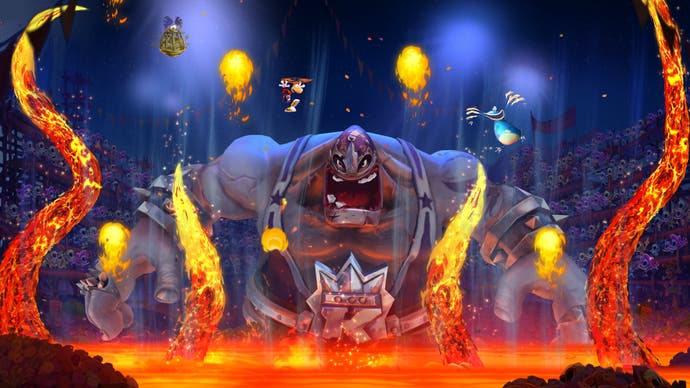
Every single aspect of the game is designed to introduce new content somewhere else, but it never gets tangled up in its own cleverness. At any point, you can open Rayman's briefcase to see what's been unlocked, and warp directly to it if need be. And that's not even mentioning the daily and weekly online leaderboard challenges which are based around their own custom versions of the game's levels; the relentless "Invaded" bonus levels which force you to play previously completed stages backwards; or Kung Foot, a silly little single-screen football game included here because, well, why not?
A showcase for the game designer's art and one of the greatest platform games of this, or any, year
Legends is the sort of game that will cram that little extra in there just because it's fun. It's an obscenely generous package, groaning with content, yet never feeling padded or bloated. It's a game that keeps delighting the player in its hundredth hour just as surely as it did during their first. Like the bit where Rayman turns into a duck and Murfy has to eat cake to solve puzzles. Yeah, that happens.
The platform game has been around for so long that it's easy to assume that the genre has run out of surprises. A showcase for the game designer's art and one of the greatest platform games of this - or any - year, Rayman Legends disproves that in glorious style. From its gorgeous visuals to its painstaking design to its abundant generosity, it shows once and for all that "hardcore gaming" is about style, flair and good, old-fashioned challenge - not how many pixels of brain matter you can spray across the screen.
